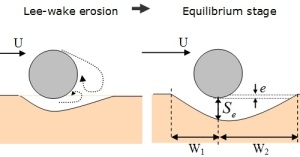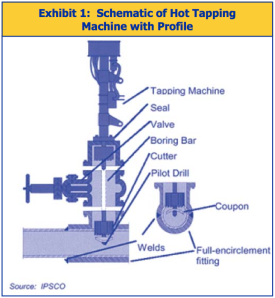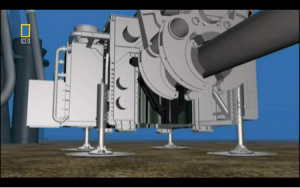The name S-lay refers to the shape the pipe assumes on its passage to the seabed. The pipe is assembled in a horizontal working plane, the firing line, by welding together sections of steel pipe. As welding progresses, the pipeline is gradually lowered to the seabed behind the ship, supported by a ‘stinger’, a steel structure protruding from the end of the firing line for support of the pipeline on rollers, to avoid pipe buckling. After a pipeline has been laid, the client oil company can transport oil or gas through it.
When performing S-lay pipeline installation, pipe is eased off the stern of the vessel as the boat moves forward. The pipe curves downward from the stern through the water until it reaches the “touchdown point,” or its final destination on the seafloor. As more pipe is welded in the line and eased off the boat, the pipe forms the shape of an “S” in the water.
Stingers, measuring up to 300 feet (91 meters) long, extend from the stern to support the pipe as it is moved into the water, as well as control the curvature of the installation. Some pipelay barges have adjustable stingers, which can be shortened or lengthened according to the water depth. Proper tension is integral during the S-lay process, which is maintained via tensioning rollers and a controlled forward thrust, keeping the pipe from buckling. S-lay can be performed in waters up to 6,500 feet (1,981 meters) deep, and as many as 4 miles (6 kilometers) a day of pipe can be installed in this manner.
Source:
http://www.rigzone.com/training/insight.asp?insight_id=311&c_id=19
http://www.allseas.com/uk/33/company/activities/pipeline-installation.html





